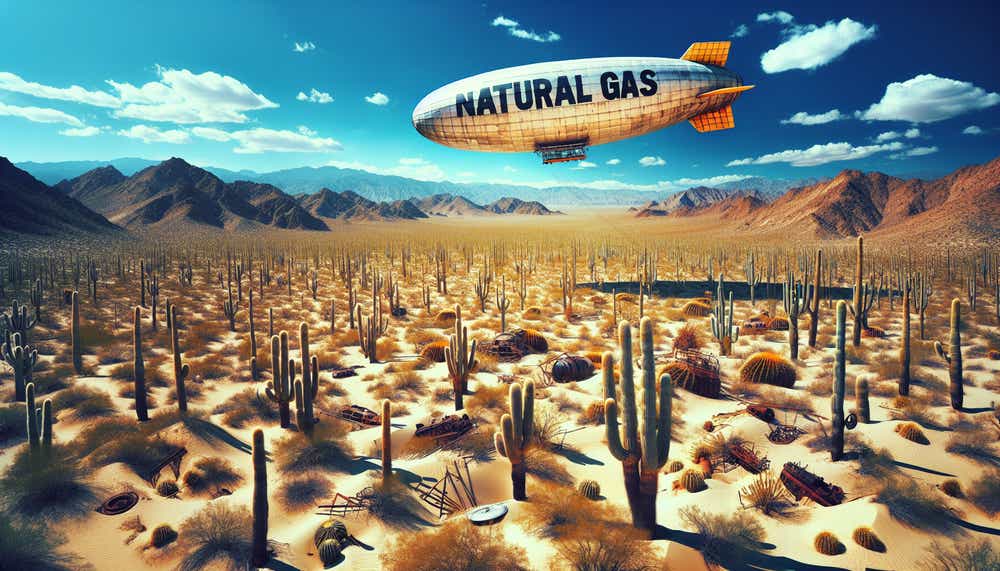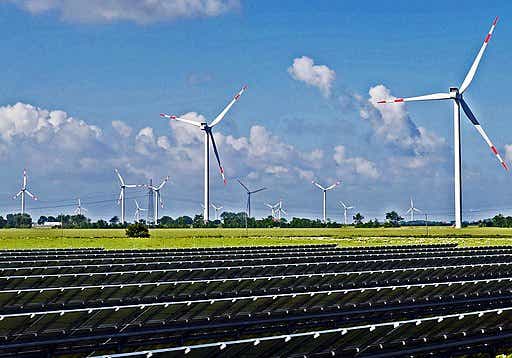Gas, Green Energy and Problem Banks

Gas, Green Energy and Problem Banks
By:James Melton
A weekly look inside Luckbox magazine

Natural gas prices are soaring. Here's why.
Natural gas prices have nearly doubled since the end of March, climbing from around $1.48 mmBtu to almost $3.00 per mmBtu.
One of the key drivers of higher prices has been the weather forecast in the continental United States, which calls for warmer-than-average temperatures in June. However, geopolitical factors are also driving the market, with tensions in Europe also adding to bullish sentiment.
A recent dispute between major energy companies in Germany and Russia has injected anxiety into the European natural gas market.
Notably, Uniper, (UNPRF), a major German energy company, recently terminated its remaining contracts with Russia's Gazprom, a majority state-owned multinational energy company. The two companies have been embroiled in a contentious dispute since 2022, involving legal challenges in both countries.
The termination of Uniper’s contracts with Gazprom marks a resolution of sorts to the dispute. However, the way the dispute was “settled” has raised anxieties in the European natural gas market. According to Uniper, Gazprom failed to fulfill its supply agreements, withholding $14 billion of gas since mid-2022.
The green revolution might never arrive
The electrified future full of 15-minute cities that are free of downtown pollution won't happen in the expected period. In fact, we might never achieve it.

Gas-guzzling conveyances aren’t the only reason. Yes, a sizable chunk of the citizenry is choosing internal-combustion over battery-powered transportation. But federal regulation, global supply chain issues and questionable American lawsuits are combining to render the green revolution impossible.
In short: Lawyers, lobbyists, legislators and lizards are impeding America’s transition to electric vehicles.
Problem banks list expands by 11
The Federal Deposit Insurance Corp. (FDIC) has placed 63 financial institutions with significant difficulties on the Problem Bank List.

While the names of these banks are not publicly disclosed, the FDIC releases the total number of problem banks and their combined assets quarterly,
The existence of 63 problematic U.S. banks might sound like a lot. And if each of the 63 banks went under, that would be a bearish development. But those 63 banks represent just 1.4% of the 4,568 banks the FDIC monitors.
Moreover, during Q4 of 2023, 52 banks were already on this list, so only 11 additional “problems” were added to the list during the first three months of 2024. Read the whole story.
Read the latest edition of Luckbox magazine here.
Not receiving Luckbox? Subscribe for free at getluckbox.com.
James Melton is managing editor of Luckbox magazine. @JDMeltonWriter
For live daily programming, market news and commentary, visit tastylive or the YouTube channels tastylive (for options traders), and tastyliveTrending for stocks, futures, forex & macro.
Trade with a better broker, open a tastytrade account today. tastylive, Inc. and tastytrade, Inc. are separate but affiliated companies.
Options involve risk and are not suitable for all investors. Please read Characteristics and Risks of Standardized Options before deciding to invest in options.